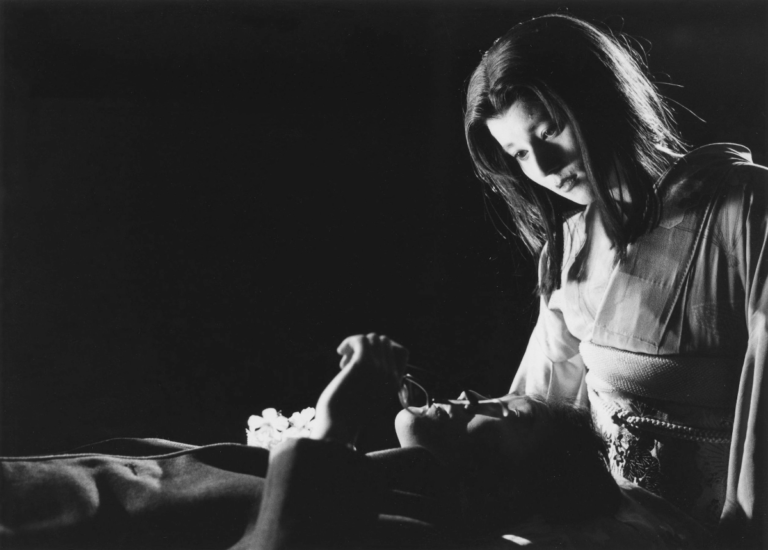Japan Society is pleased to announce the first North American retrospective on director Kaizo Hayashi, one of the great luminaries of independent Japanese cinema in the 1980s and 1990s. The world of Kaizo Hayashi is one of cinematic reverie and enchantment, whose reverence for film history—transposing genre and stylistic conventions from benshi and silent era serials to jidaigeki and hardboiled noir—results in one of the most imaginative and inspiring filmographies of the post-studio era. Invoking the mystery and intrigue of the moving image, amidst the flutter of celluloid frames, his cinema of the past brims with ingenuity and far-flung imagination, conjuring fantasies of what dreams may come.
Forever associated with the elusive search of the detective, Hayashi eludes homage and pastiche, crafting works in dialogue with his influences, wherein—as Donald Richie remarked on Hayashi’s debut—“history is used as though it were living and perhaps as a consequence, it comes alive.” Lost romanticism, dreams deferred in light of earthly troubles, untethered time and anachronisms drift through Hayashi’s oeuvre, itself filtered through a postmodernist and transcendent lens. Hayashi’s penchant for literary and cinematic allusion is never far behind (his debut feature takes its name from Hamlet’s “To Be or Not to Be” soliloquy) as are his influences, from the silent era chanbara of Daisuke Ito to Nikkatsu action and Humphrey Bogart’s Sam Spade. Working with a remarkable roster of talent, Hayashi launched the careers of actor Shiro Sano (then a disciple of angura director Juro Kara) and Ring/Grudge producer Takashige Ichise while also collaborating with renowned Seijun Suzuki art director Takeo Kimura (Tokyo Drifter, Zigeunerweisen, Dogra Magra); Nikkatsu action star Jo Shishido; Red Elegy songwriter Morio Agata; and Shunsui Matsuda, the last benshi of the silent era. An independent talent who miraculously emerged in the 1980s outside of the typical avenues of the amateur small-gauge jishu eiga (autonomous or self-made film) championed by PIA or pinku, Hayashi arose with no formal training, endeavoring to make films equipped with only his deep devotion to cinema.
To kick off So as to Dream, Hayashi will be in attendance for the first weekend of screenings, starting with the opening night screening of his astonishing debut To Sleep So as to Dream—a mystical evocation of cinema that would screen at the 1986 Venice International Film Festival and NYFF—presented on a rare, archival 16mm import on October 11th. Hayashi will further attend the weekend screenings of his expressionist tribute to the traveling circus, Circus Boys and his celebrated neo noir The Most Terrible Time of My LIFE. The series also includes the international 4K restoration premieres of Hayashi’s popular Maiku Hama trilogy starring Masatoshi Nagase (P.P. Rider, Mystery Train) as the titular Yokohama private eye (Maiku Hama is a take on pulp writer Mickey Spillane’s Mike Hammer), specially prepared for Japan Society screenings. Following the restoration premiere of The Most Terrible Time of My LIFE on October 12 with Hayashi in-person, the remaining Maiku Hama restorations—The Stairway to the Distant Past, a vibrant Cinemascope middle chapter, and hypnotic psychological thriller THE TRAP—will premiere the following weekend of October 18-19.
Tickets: $16/$14 students and seniors/$12 Japan Society members.
To Sleep So as to Dream with Opening Reception: $20/$16 Japan Society members
Screenings take place in Japan Society’s landmarked headquarters at 333 East 47th Street, one block from the United Nations. Lineup and other details subject to change. For complete information, visit japansociety.org/film. Tickets are available now.


